*NURSING > NCLEX-PN > NCLEX SATA 1-5. A Complete and Comprehensive Select All That Apply Questions and Answers. (All)
NCLEX SATA 1-5. A Complete and Comprehensive Select All That Apply Questions and Answers.
Document Content and Description Below
NCLEX SATA 1-5. A Complete and Comprehensive Select All That Apply Questions and Answers. NCLEX SATA 1 1. A patient is admitted to the same day surgery unit for liver biopsy. Which of the following... laboratory tests assesses coagulation? Select all that apply. 1. Partial thromboplastin time. 2. Prothrombin time. 3. Platelet count. 4. Hemoglobin 5. Complete Blood Count 6. White Blood Cell Count 2. A patient is admitted to the hospital with suspected polycythemia vera. Which of the following symptoms is consistent with the diagnosis? Select all that apply. 1. Weight loss. 2. Increased clotting time. 3. Hypertension. 4. Headaches. 3. The nurse is teaching the client how to use a metered dose inhaler (MDI) to administer a Corticosteroid drug. Which of the following client actions indicates that he is using the MDI correctly? Select all that apply. 1. The inhaler is held upright. 2. Head is tilted down while inhaling the medication 3. Client waits 5 minutes between puffs. 4. Mouth is rinsed with water following administration 5. Client lies supine for 15 minutes following administration. 4. The nurse is teaching a client with polycythemia vera about potential complications from this disease. Which manifestations would the nurse include in the client’s teaching plan? Select all that apply. 1. Hearing loss 2. Visual disturbance 3. Headache 4. Orthopnea 5. Gout 6. Weight loss 5. Which of the following would be priority assessment data to gather from a client who has been diagnosed with pneumonia? Select all that apply. 1. Auscultation of breath sounds 2. Auscultation of bowel sounds 3. Presence of chest pain. 4. Presence of peripheral edema 5. Color of nail beds 6. The nurse is teaching a client who has been diagnosed with TB how to avoid spreading the disease to family members. Which statement(s) by the client indicate(s) that he has understood the nurses instructions? Select all that apply. 1. “I will need to dispose of my old clothing when I return home.” 2. “I should always cover my mouth and nose when sneezing.” 3. “It is important that I isolate myself from family when possible.” 4. “I should use paper tissues to cough in and dispose of them properly.” 5. “I can use regular plate and utensils whenever I eat.” 7. The nurse is admitting a client with hypoglycemia. Identify the signs and symptoms the nurse should expect. Select all that apply. 1. Thirst 2. Palpitations 3. Diaphoresis 4. Slurred speech 5. Hyperventilation 8. Which adaptations should the nurse caring for a client with diabetic ketoacidosis expect the client to exhibit? Select all that apply: 1. Sweating 2. Low PCO2 3. Retinopathy 4. Acetone breath 5. Elevated serum bicarbonate 9. When planning care for a client with ulcerative colitis who is experiencing symptoms, which client care activities can the nurse appropriately delegate to a unlicensed assistant? Select all that apply. 1. Assessing the client’s bowel sounds 2. Providing skin care following bowel movements 3. Evaluating the client’s response to antidiarrheal medications 4. Maintaining intake and output records 5. Obtaining the client’s weight. 10. Which of the following nursing diagnoses would be appropriate for a client with heart failure? Select all that apply. 1. Ineffective tissue perfusion related to decreased peripheral blood flow secondary to decreased cardiac output. 2. Activity intolerance related to increased cardiac output. 3. Decreased cardiac output related to structural and functional changes. 4. Impaired gas exchange related to decreased sympathetic nervous system activity. 11. When caring for a client with a central venous line, which of the following nursing actions should be implemented in the plan of care for chemotherapy administration? Select all that apply. 1. Verify patency of the line by the presence of a blood return at regular intervals. 2. Inspect the insertion site for swelling, erythema, or drainage. 3. Administer a cytotoxic agent to keep the regimen on schedule even if blood return is not present. 4. If unable to aspirate blood, reposition the client and encourage the client to cough. 5. Contact the health care provider about verifying placement if the status is questionable. 12. A 20-year old college student has been brought to the psychiatric hospital by her parents. Her admitting diagnosis is borderline personality disorder. When talking with the parents, which information would the nurse expect to be included in the client’s history? Select all that apply. 1. Impulsiveness 2. Lability of mood 3. Ritualistic behavior 4. psychomotor retardation 5. Self-destructive behavior 13. When assessing a client diagnosed with impulse control disorder, the nurse observes violent, aggressive, and assaultive behavior. Which of the following assessment data is the nurse also likely to find? Select all that apply. 1. The client functions well in other areas of his life. 2. The degree of aggressiveness is out of proportion to the stressor. 3. The violent behavior is most often justified by the stressor. 4. The client has a history of parental alcoholism and chaotic, abusive family life. 5. The client has no remorse about the inability to control his anger. 14. Which of the following nursing interventions are written correctly? (Select all that apply.) 1. Apply continuous passive motion machine during day. 2. Perform neurovascular checks. 3. Elevate head of bed 30 degrees before meals. 4. Change dressing once a shift. 15. The nurse is monitoring a client receiving peritoneal dialysis and nurse notes that a client’s outflow is less than the inflow. Select actions that the nurse should take. 1. Place the client in good body alignment 2. Check the level of the drainage bag 3. Contact the physician4. Check the peritoneal dialysis system for kinks 5. Reposition the client to his or her side. 16. The nurse is caring for a hospitalized client who has chronic renal failure. Which of the following nursing diagnoses are most appropriate for this client? Select all that apply. 1. Excess Fluid Volume 2. Imbalanced Nutrition; Less than Body Requirements 3. Activity Intolerance 4. Impaired Gas Exchange 5. Pain. 17. The nurse is assessing a child diagnosed with a brain tumor. Which of the following signs and symptoms would the nurse expect the child to demonstrate? Select all that apply. 1. Head tilt 2. Vomiting 3. Polydipsia 4. Lethargy 5. Increased appetite 6. Increased pulse 18. The nurse is caring for a client with a T5 complete spinal cord injury. Upon assessment, the nurse notes flushed skin, diaphoresis above the T5, and a blood pressure of 162/96. The client reports a severe, pounding headache. Which of the following nursing interventions would be appropriate for this client? Select all that apply. 1. Elevate the HOB to 90 degrees 2. Loosen constrictive clothing 3. Use a fan to reduce diaphoresis 4. Assess for bladder distention and bowel impaction 5. Administer antihypertensive medication 6. Place the client in a supine position with legs elevated 19. The nurse is evaluating the discharge teaching for a client who has an ileal conduit. Which of the following statements indicates that the client has correctly understood the teaching? Select all that apply. 1. “If I limit my fluid intake I will not have to empty my ostomy pouch as often.” 2. “I can place an aspirin tablet in my pouch to decrease odor.” 3. “I can usually keep my ostomy pouch on for 3 to 7 days before changing it.” 4. “I must use a skin barrier to protect my skin from urine.” 5. “I should empty my ostomy pouch of urine when it is full.” 20. A nurse is assisting in performing an assessment on a client who suspects that she is pregnant and is checking the client for probable signs of pregnancy. Select all probable signs of pregnancy. 1. Uterine enlargement 2. Fetal heart rate detected by nonelectric device 3. Outline of the fetus via radiography or ultrasound 4. Chadwick’s sign 5. Braxton Hicks contractions 6. Ballottement 21. A nurse is monitoring a pregnant client with pregnancy induced hypertension who is at risk for Preeclampsia. The nurse checks the client for which specific signs of Preeclampsia (select all that apply)? 1. Elevated blood pressure 2. Negative urinary protein 3. Facial edema 4. Increased respirations 22. A nurse is caring for a pregnant client with severe preeclampsia who is receiving IV magnesium sulfate. Select all nursing interventions that apply in the care for the client. 1. Monitor maternal vital signs every 2 hours 2. Notify the physician if respirations are less than 18 per minute. 3. Monitor renal function and cardiac function closely 4. Keep calcium gluconate on hand in case of a magnesium sulfate overdose 5. Monitor deep tendon reflexes hourly 6. Monitor I and O’s hourl [Show More]
Last updated: 1 year ago
Preview 1 out of 14 pages
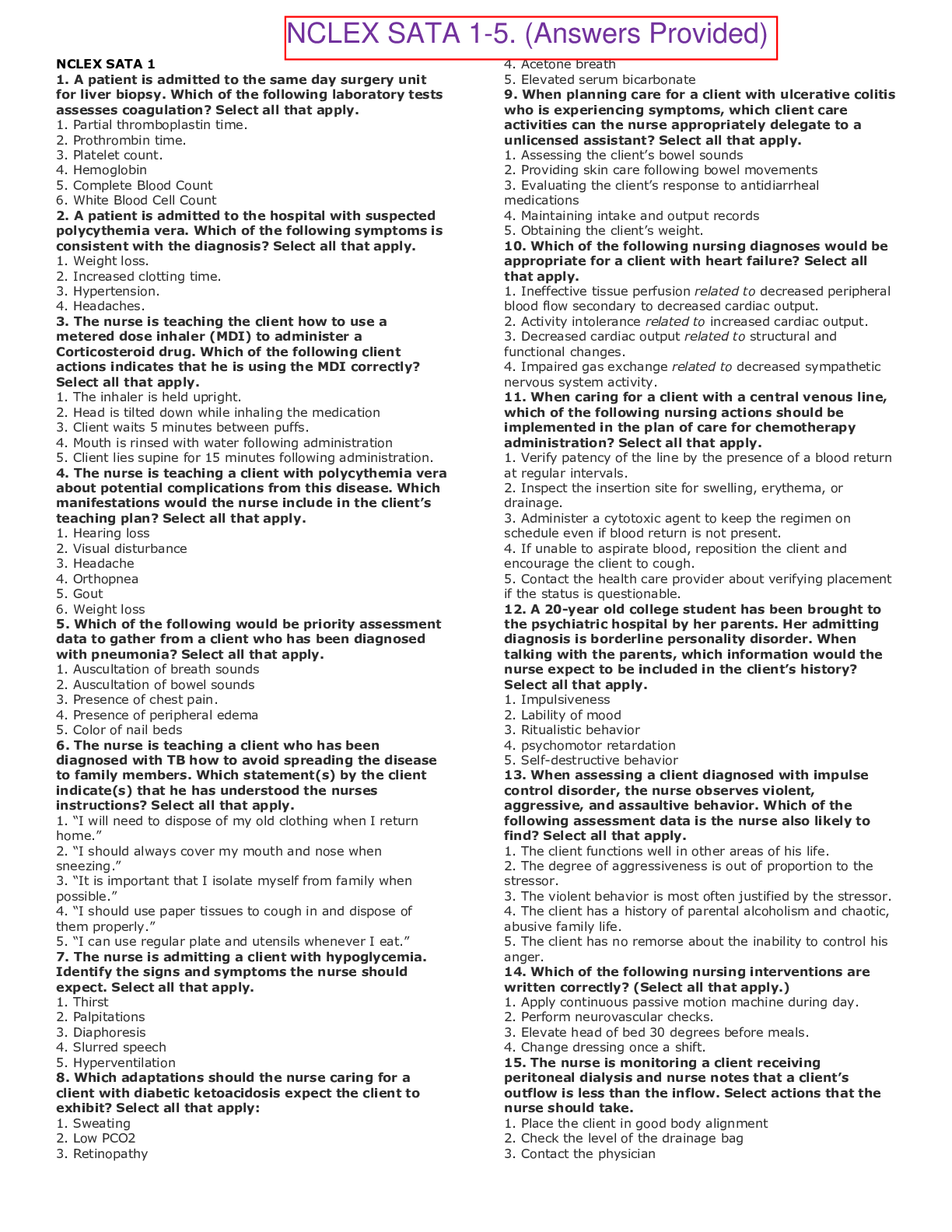
Reviews( 0 )
Document information
Connected school, study & course
About the document
Uploaded On
Nov 10, 2021
Number of pages
14
Written in
Additional information
This document has been written for:
Uploaded
Nov 10, 2021
Downloads
1
Views
397

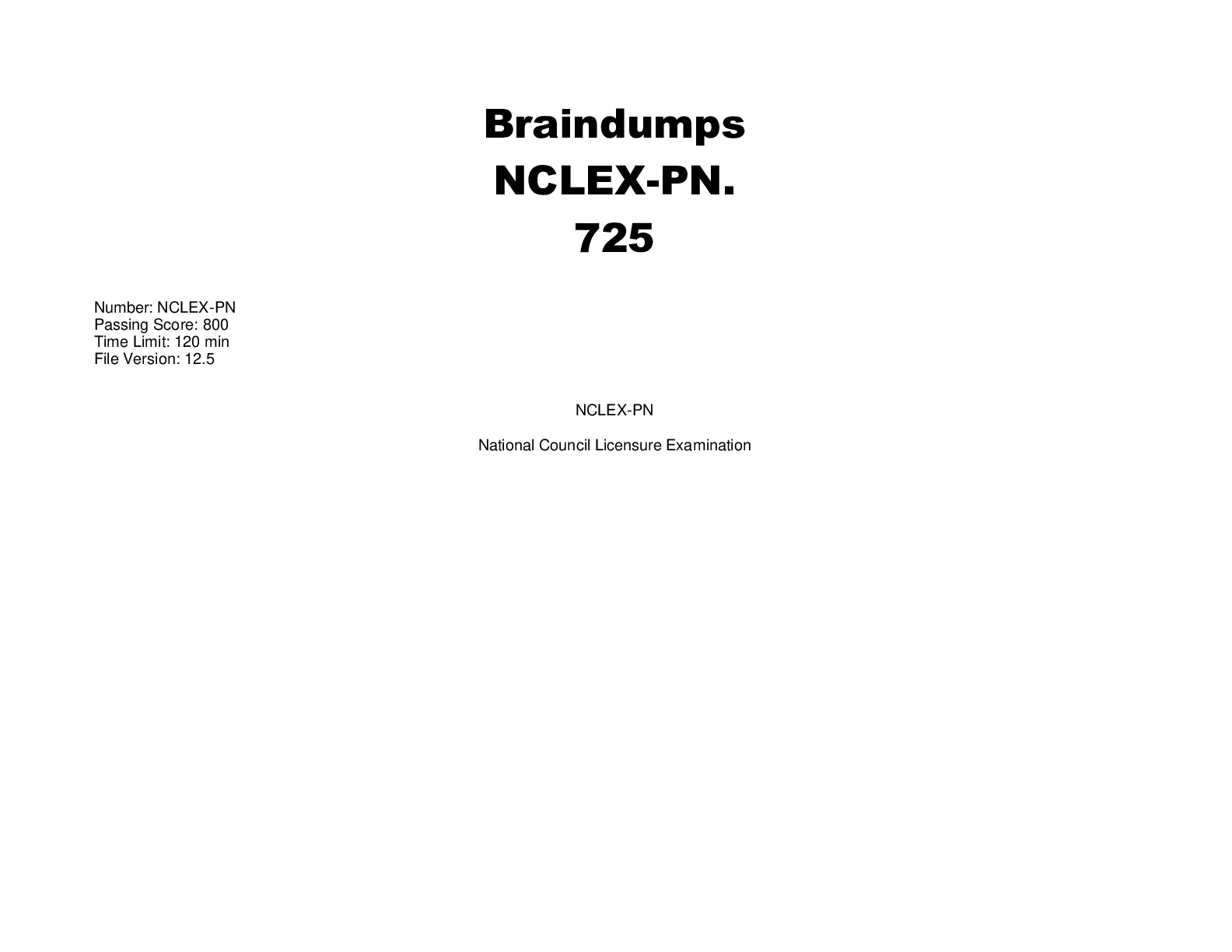
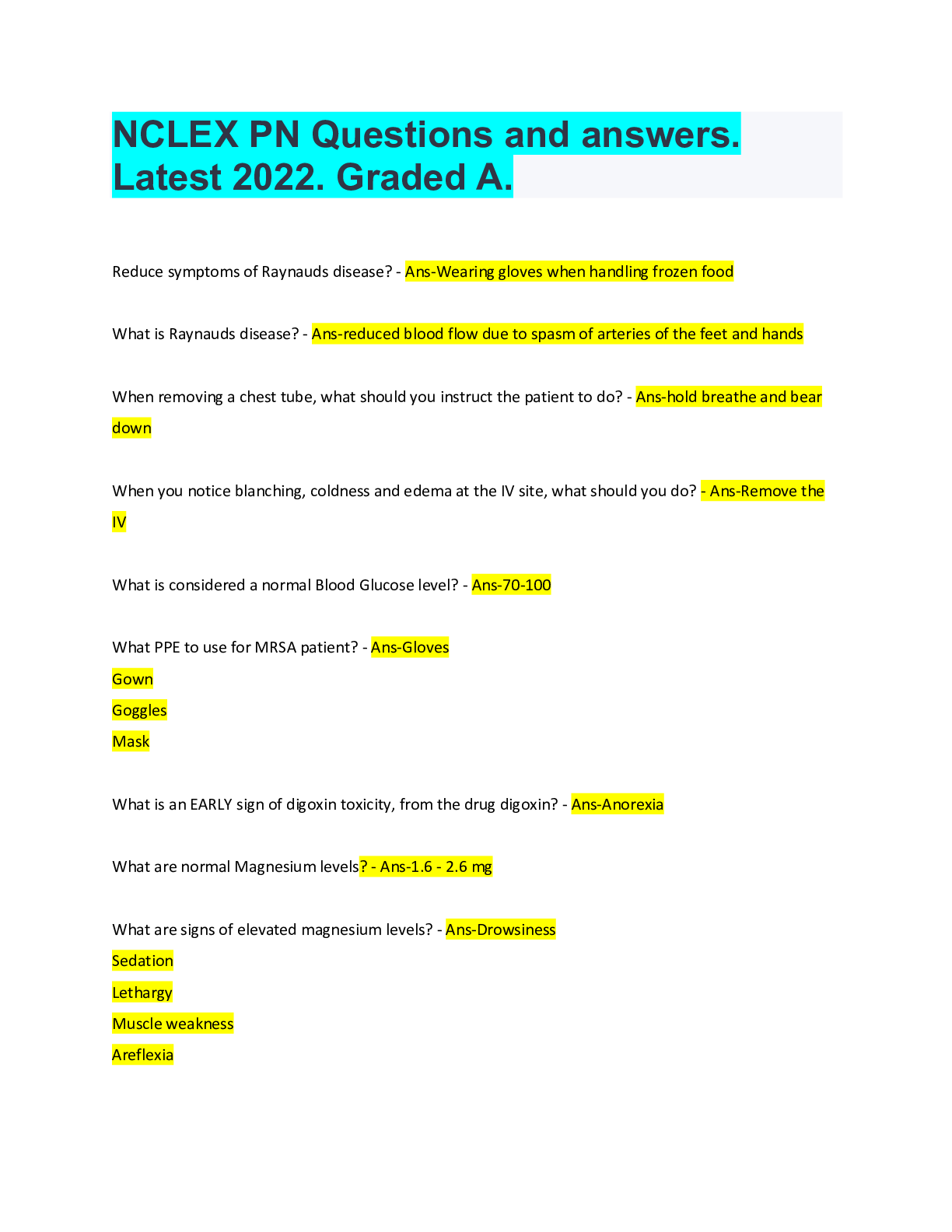
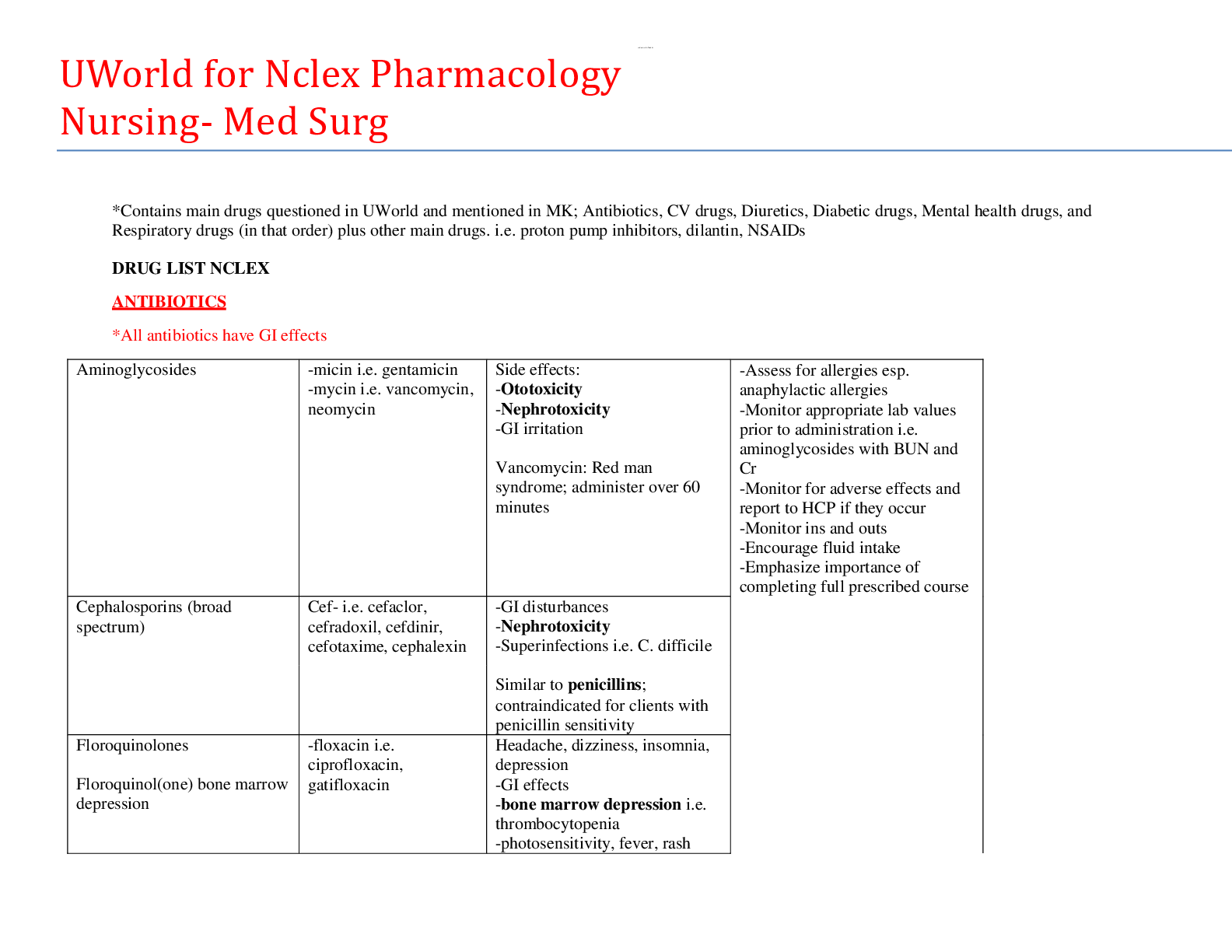
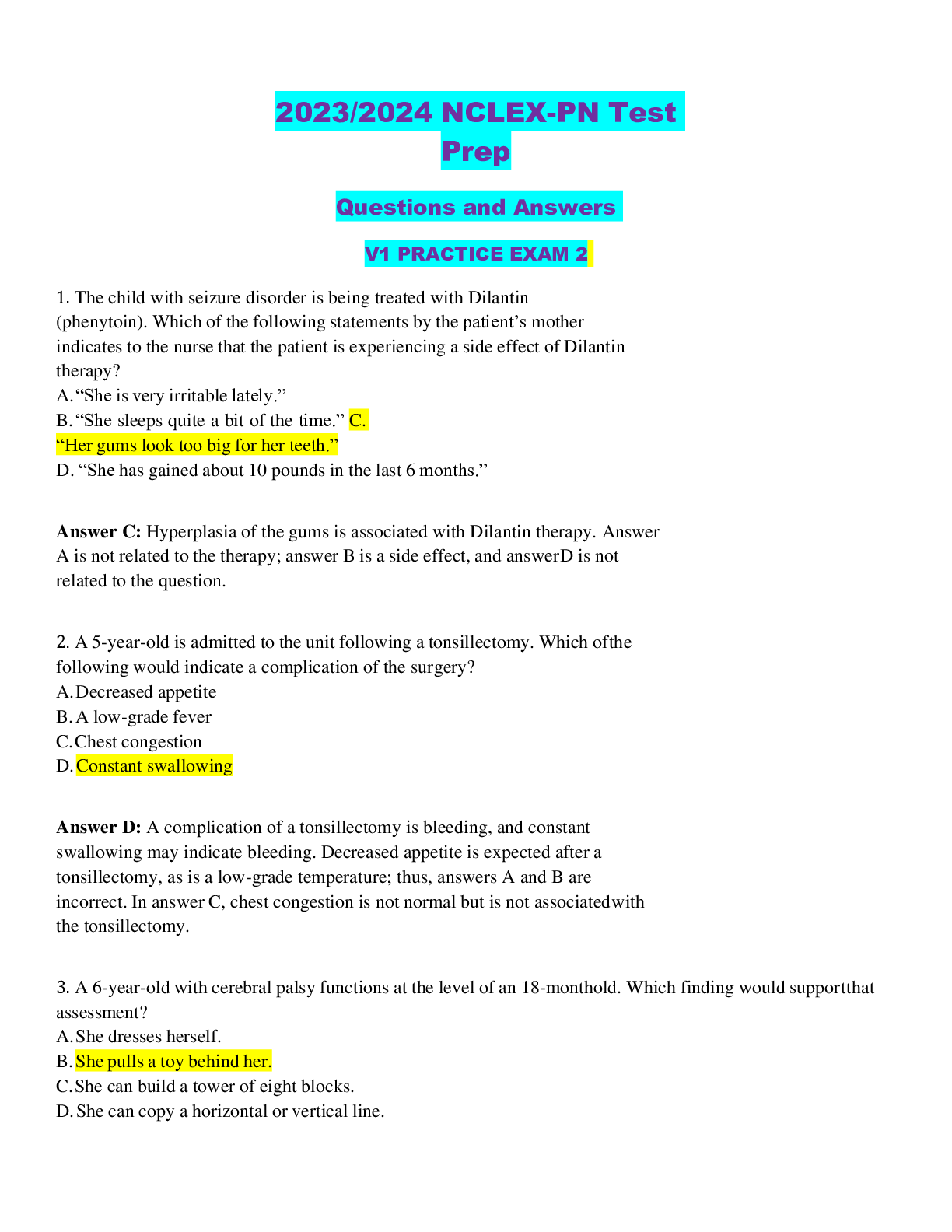
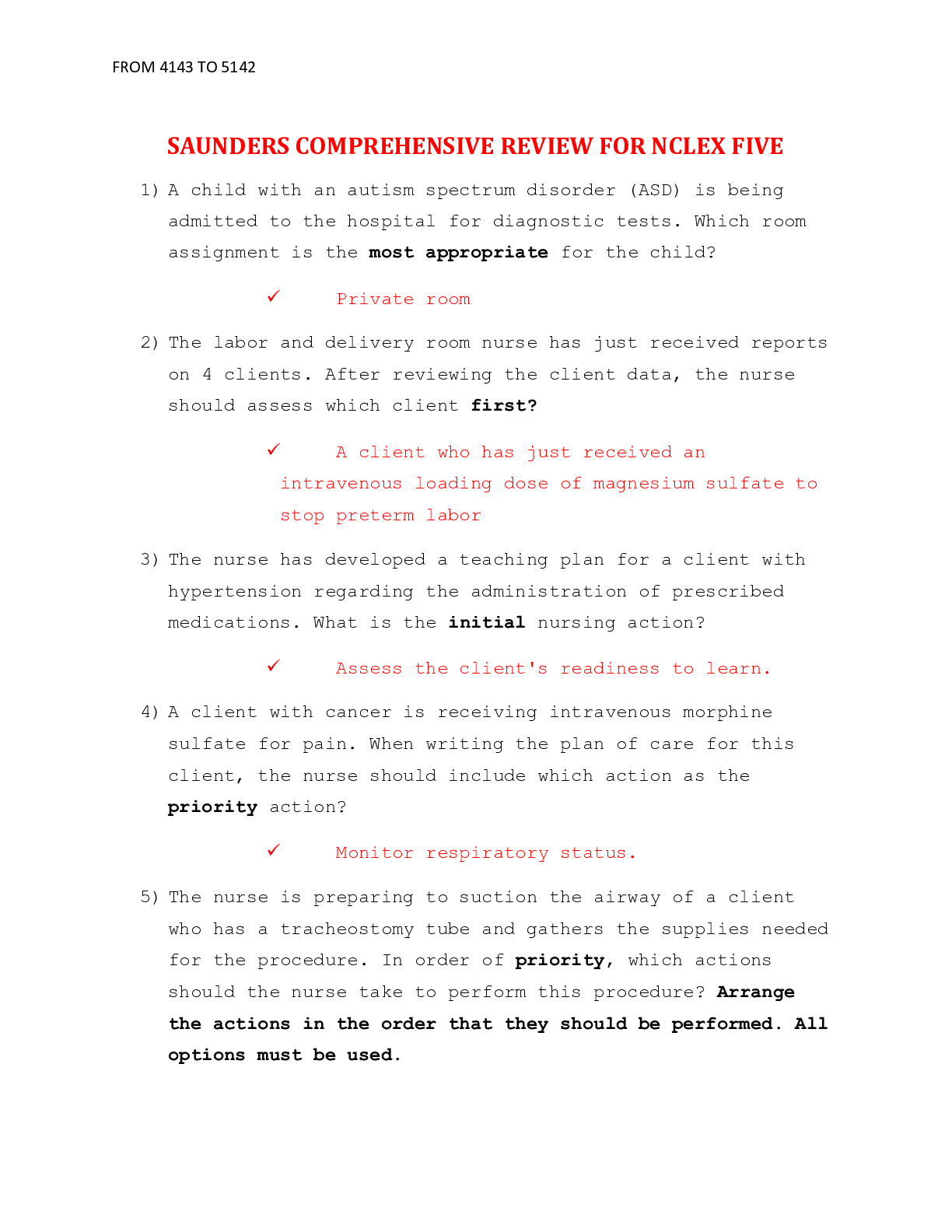
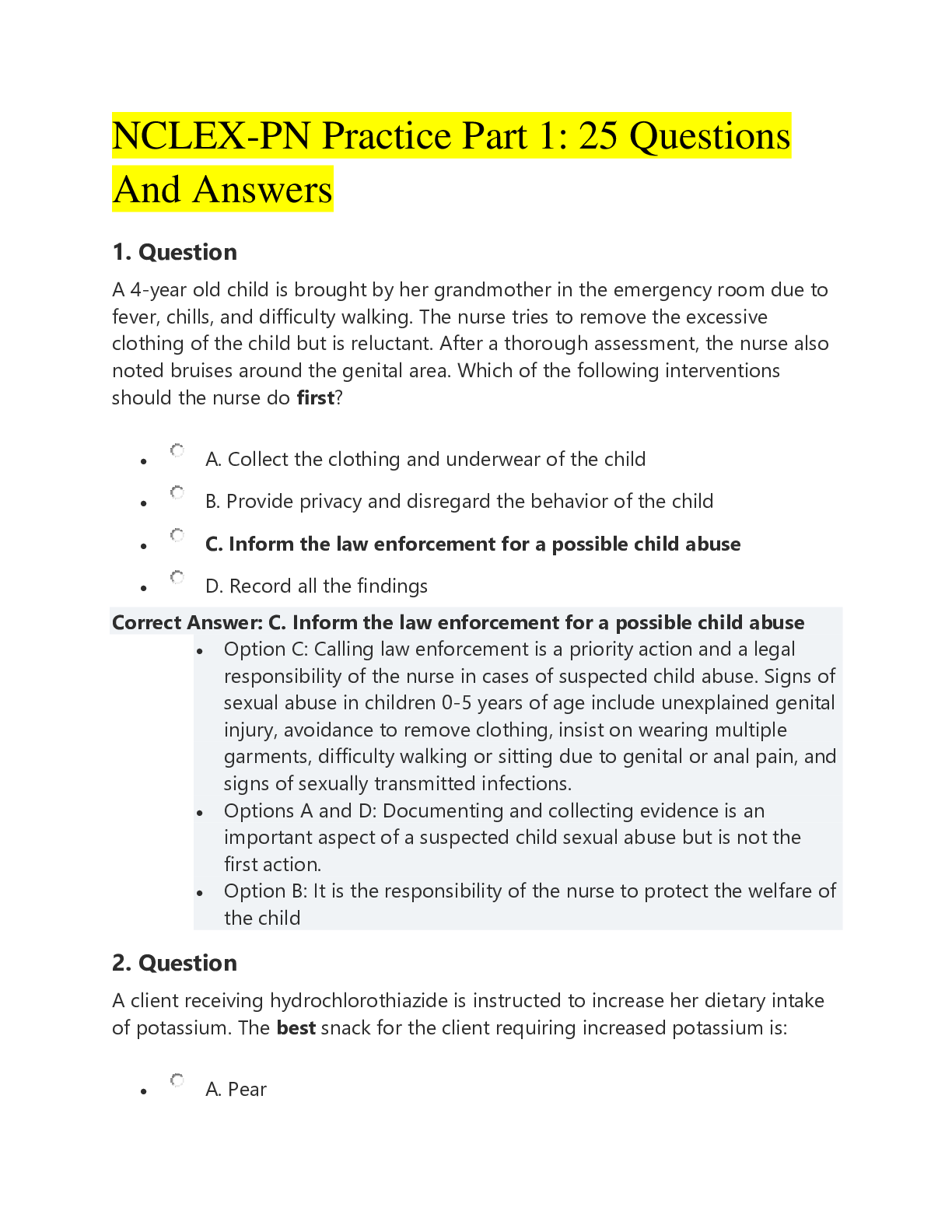
.png)
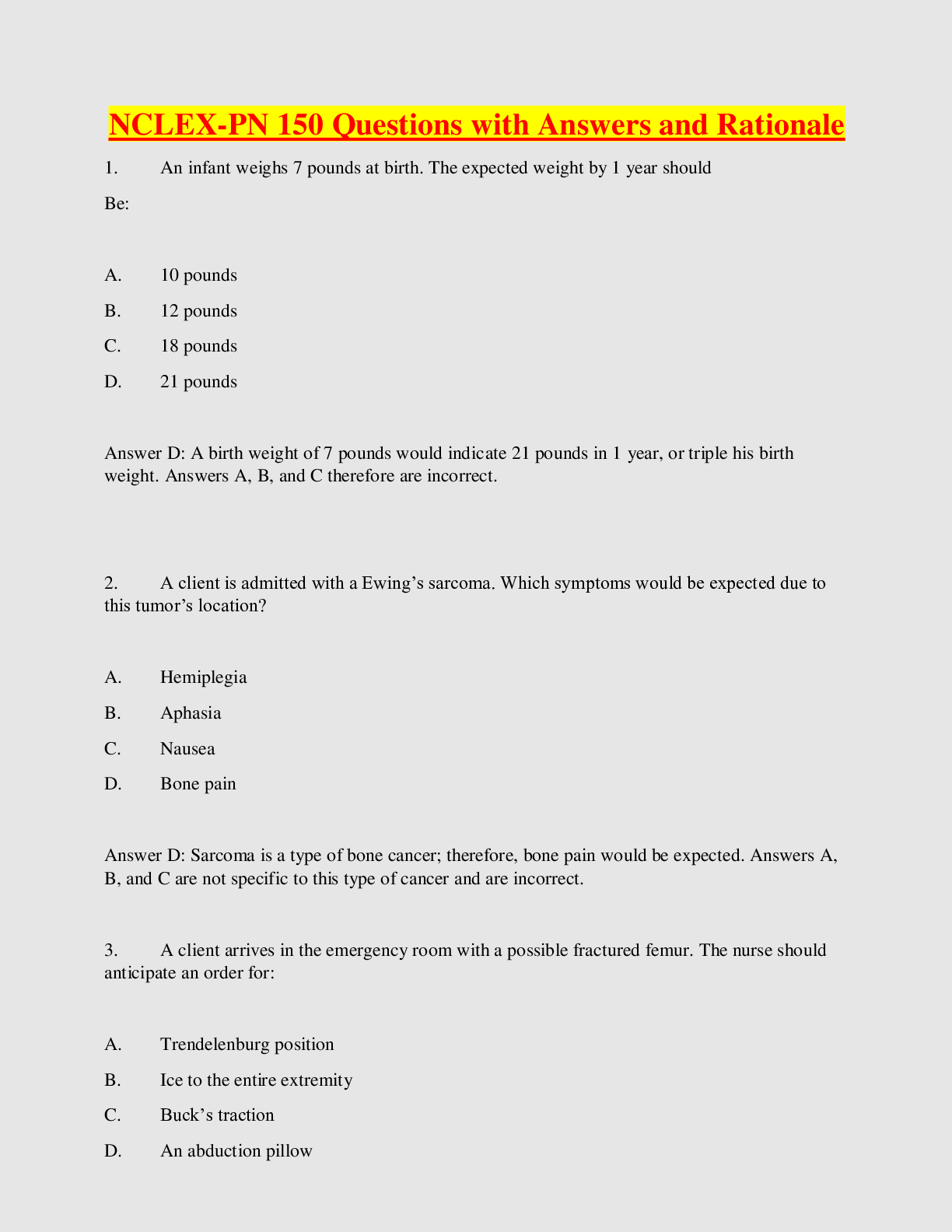
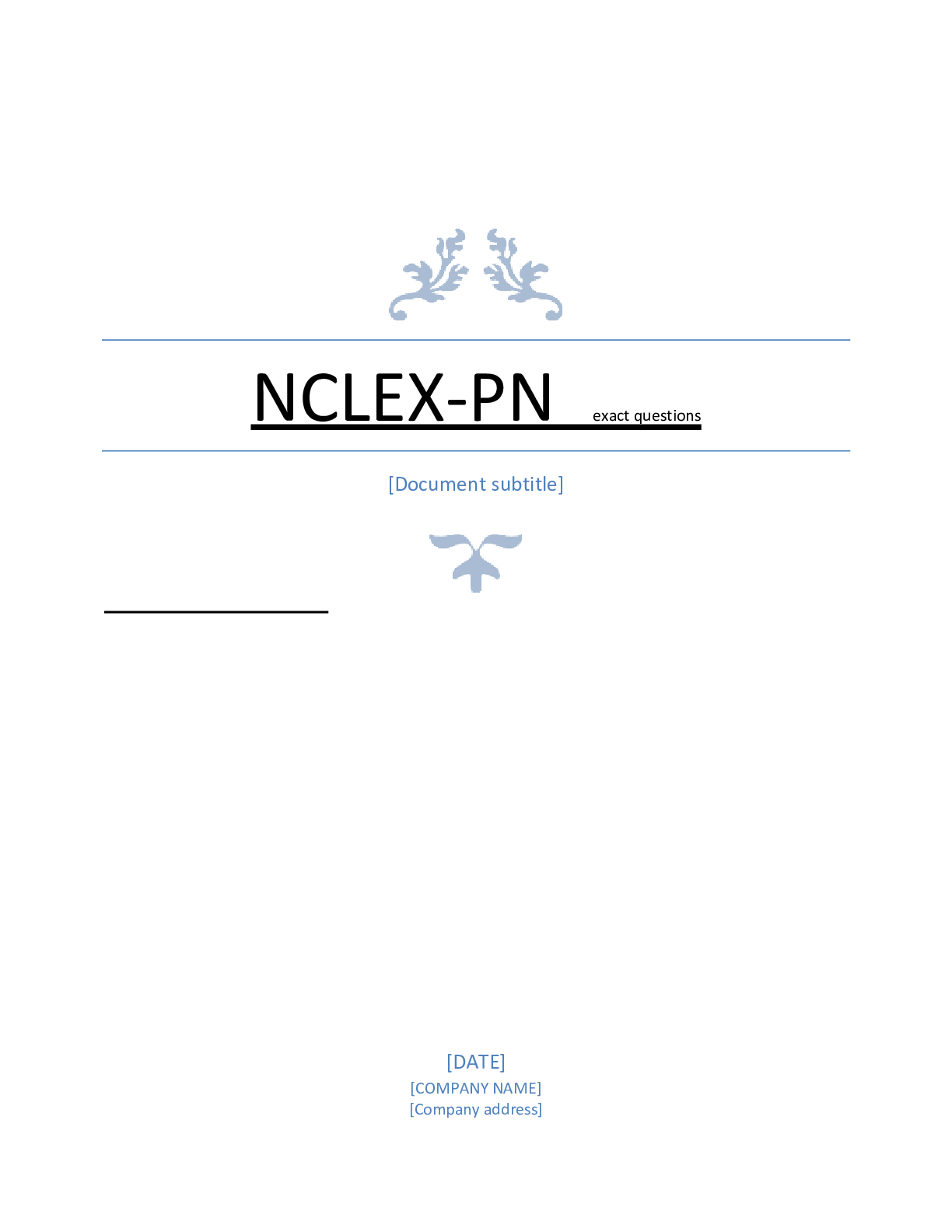
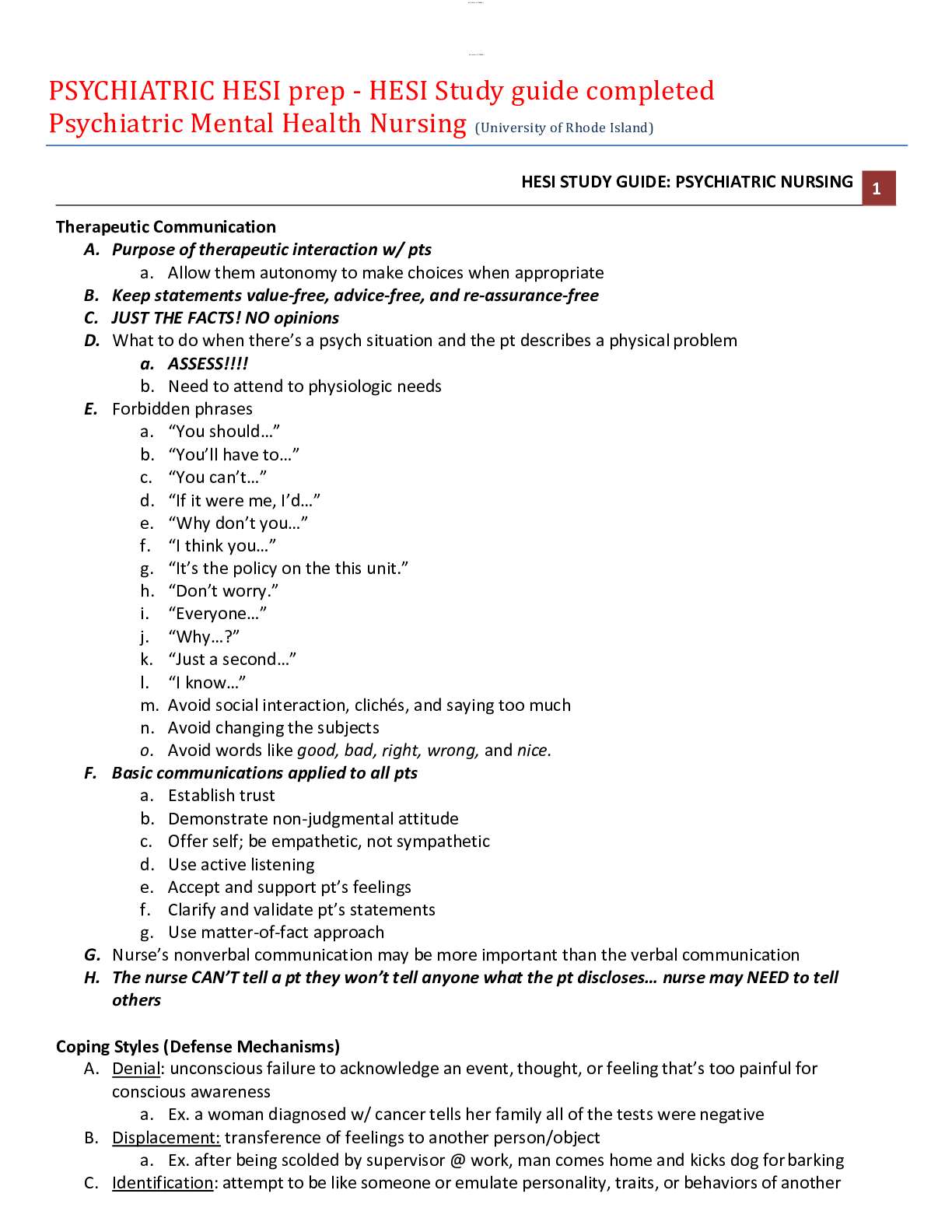
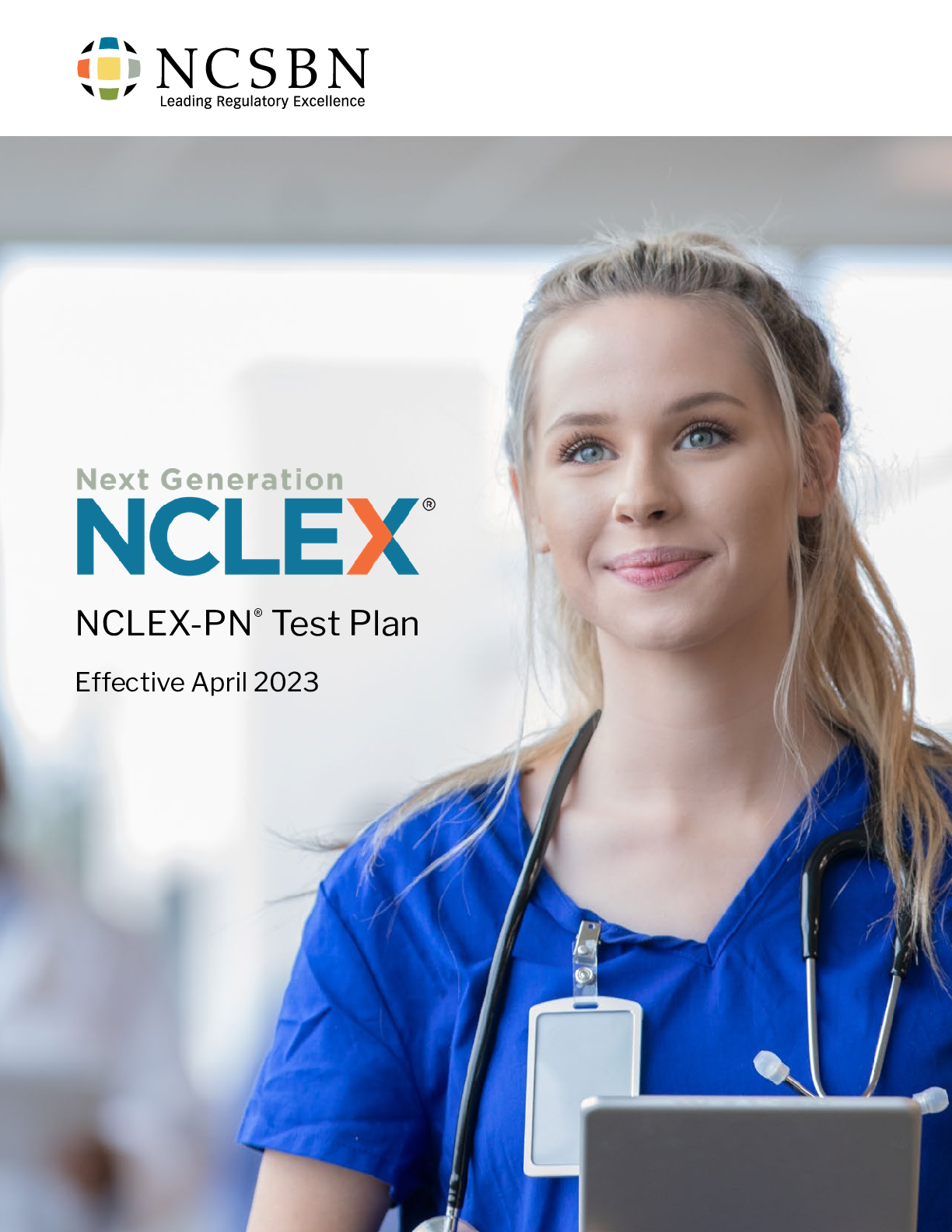
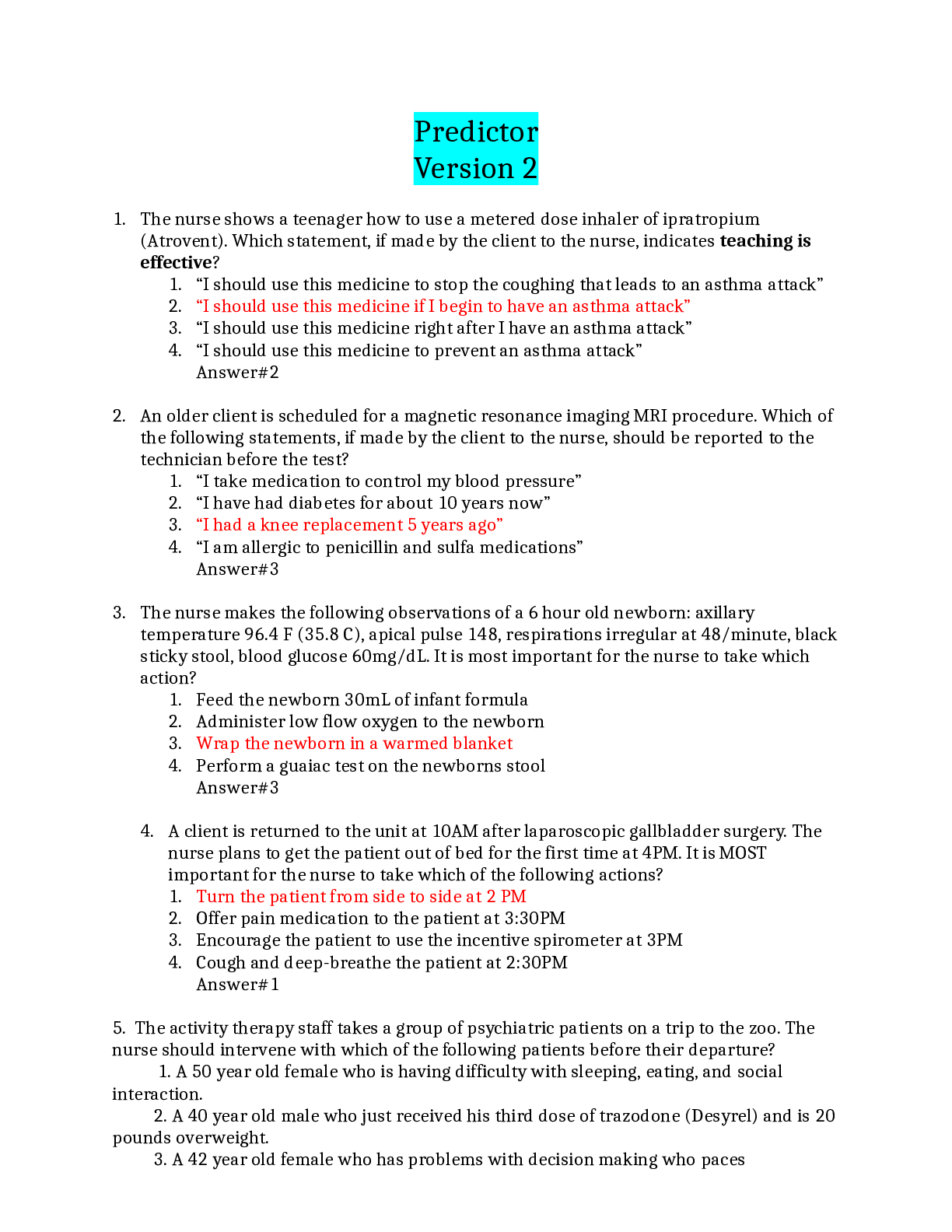
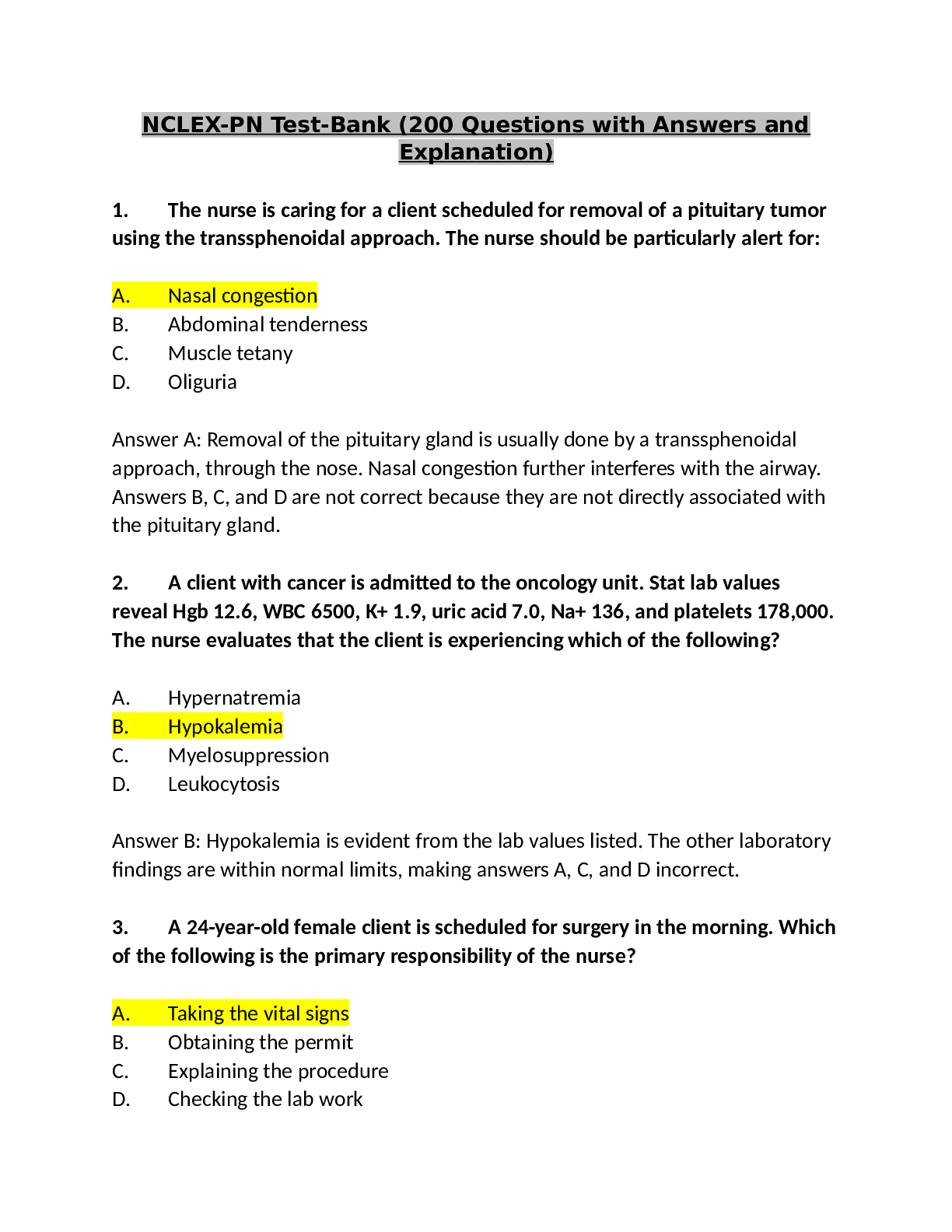

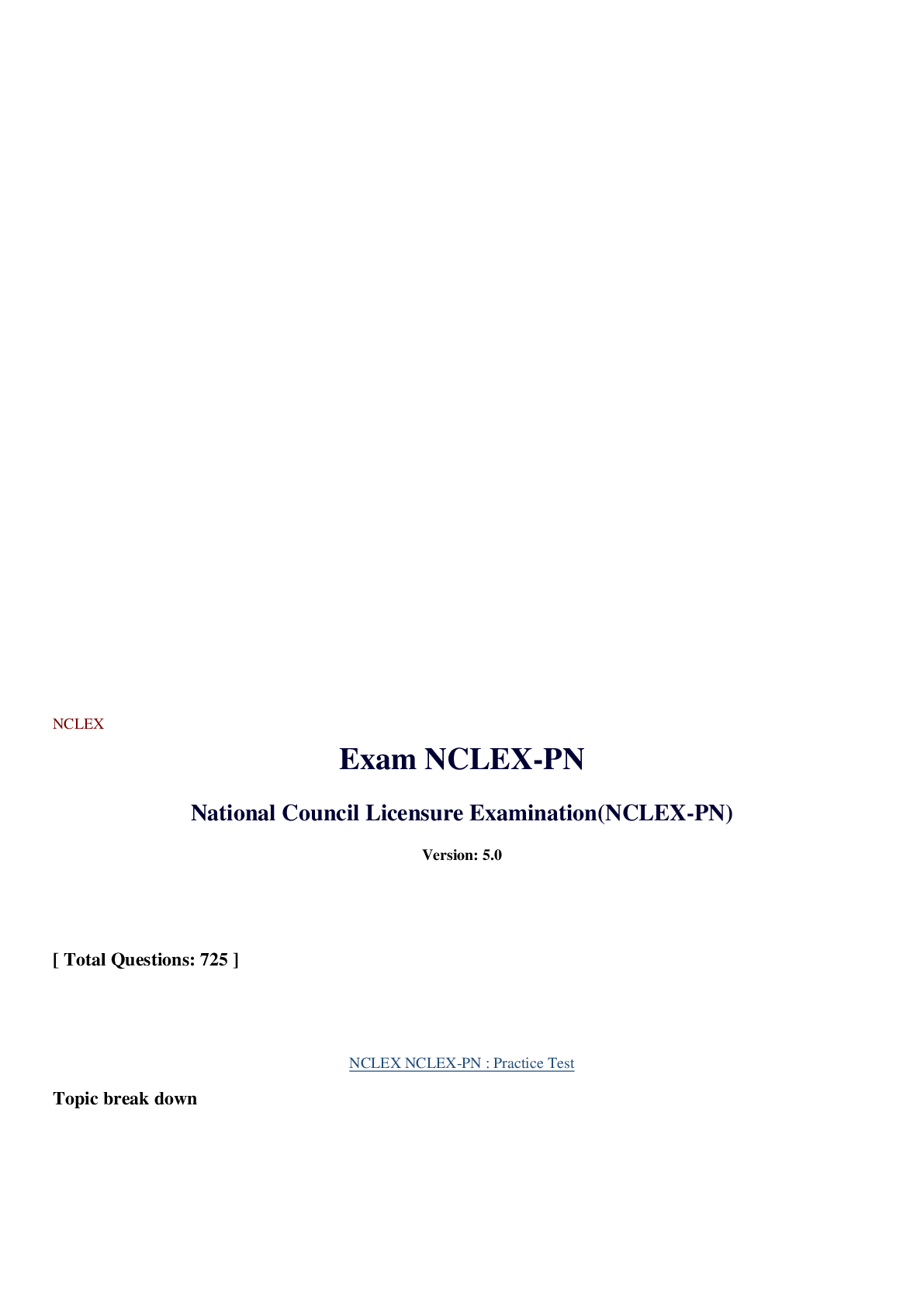
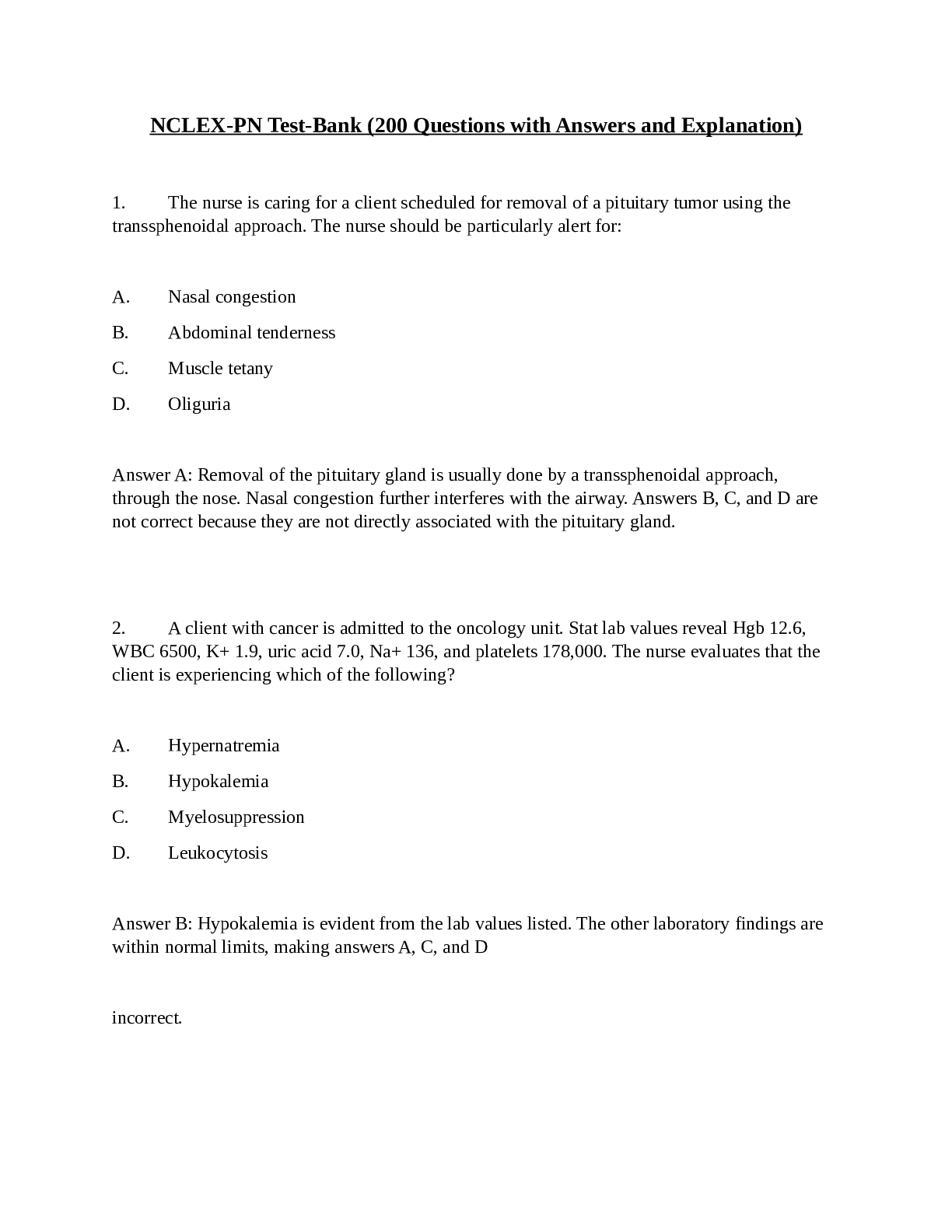
 Latest 2022-2023.png)

